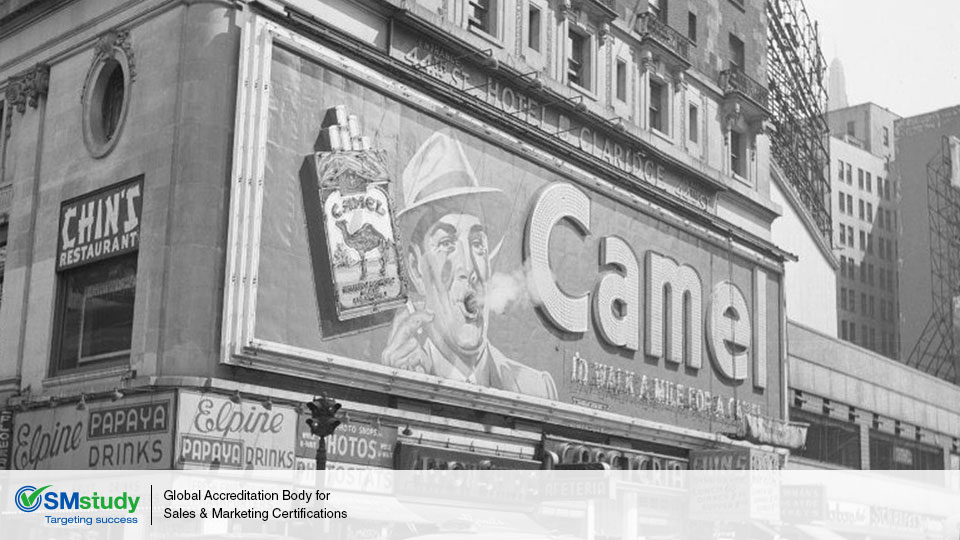More than six thousand digital billboards light up America’s roadways, yet, we’re still in the dark![1]
We thought that—with the explosion of social media, the long (waning?) reign of broadcast advertising, Internet advertising, and more—billboards, like sandwich boards, were becoming a thing of the past. Yet, according to the association, there are more than 158,000 standard billboards (also known as “bulletins” in the trade) and 165,500 posters (the slightly smaller sized billboard common in urban settings). Then there’s “billboards” on the sides of trucks, 2,700, and wrapped around buses, 205,000. That’s a lot of OOH (Out of Home) advertising!
This exemplifies something that Marketing Strategy, book one in the SMstudy® Guide series, says: “Rather than viewing the changes as completely replacing the earlier practices, Sales and Marketing approaches should be viewed as a continuum where recent innovations can co-exist with earlier practices.”
If you have been following our posts at SMstudy, you may remember that we have addressed the idea that old ways stay and can continue to be profitable even in the midst of great innovation.[2] OOH advertising offers two examples of not only how older approaches can remain relevant but also co-exist in symbiotic relationships.
As the numbers quoted above show, billboard advertising is alive and kicking in today’s innovative age. One cause of this is that “the brevity of OOH’s copy is ideal for driving traffic to a website,” according to OAAA. In cities with the fifty worst commutes, Americans spend from 32 minutes (with 8 percent of this city’s commuters spending more than an hour) to 42.6 minutes (and 25 percent spending more than one hour) one way.[3] That’s a lot of time spent slowly moving with the traffic flow. The vast majority of Americans spend from 30 minutes to an hour driving to and from work. Include the time they spend traveling for other purposes and that’s like having an arena’s worth of people idling past every billboard.
Co-existing can be more than just parallel existence at a distance. For example, “OOH reinforces television messages when viewers are away from their homes during the course of daily activities,” says to OAAA adding, “Television is expensive. OOH improves the efficiency of a television campaign buy by driving down CPM costs. OOH reaches light TV viewers who are younger, mobile, and more affluent than heavy TV viewers.”
OAAA points out that “younger, mobile, and more affluent than heavy TV viewers” also describes Internet users. This becomes an important insight when the marketing team considers its product’s marketing mix. “In a differentiated targeting strategy, a company directs its marketing efforts towards two or more segments by creating a different marketing mix for each segment. Each marketing mix for this strategy typically varies depending on product features, distribution methods, promotion methods, and pricing,” according to Marketing Strategy. As each market segment is targeted, the team develops a mix of “promotion methods.” These methods can include conventional mass media marketing and fragmented new-age marketing (aimed at channels such as Internet, social media, and mobile devices).
The old and the new not only can exist side-by-side but they can flourish. And that’s something to OOH and ah about!
For more interesting and informative articles on sales and marketing, visit SMstudy.com.
[1] This datum is according to the Outdoor Advertising Association of America (OAAA) in their OOH (Out of Home) Formats on the OAAA site at https://www.oaaa.org/OutofHomeAdvertising/OOHMediaFormats/OOHMediaFormats.aspx
[2] As in our recent blog, “Pushing the Envelope: The Case for Paper,” www.smstudy.com/Article/pushing-the-envelope-the-case-for-paper
[3] “The 50 Worst Commutes in America.” (1/28/16) MSN; News. Retrieved on 4/12/16 from http://www.msn.com/en-us/news/us/the-50-worst-commutes-in-america/ss-AAakiJv#image=51

